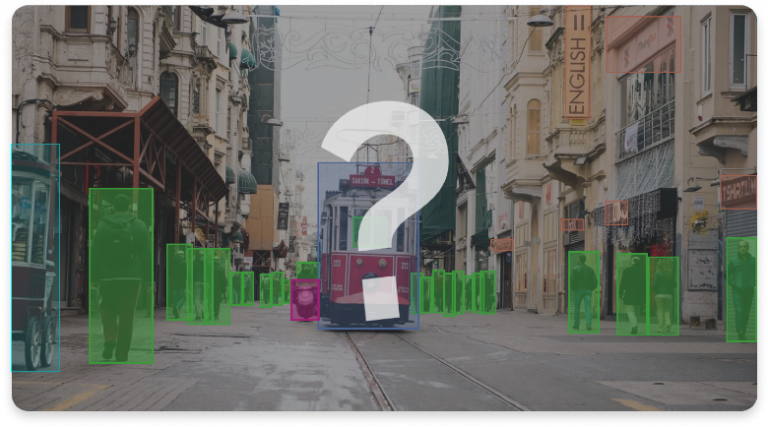Fabric simulation by the Sturmer-Verlet method
Imagine a complex weave of folds, the tension of fabric fluttering in the wind. Now imagine trying to replicate all of that in a virtual environment. At first glance, the task seems deceptively simple, but even here there are pitfalls. At the heart of fabric modeling is a delicate balance between physical accuracy and computational efficiency.
Cloth modeling essentially involves solving the Cauchy problem, which is to find the future state of a system given its initial conditions and governing differential equations. In this context, the positions and velocities of particles in the cloth are determined by forces such as gravity, wind, and internal constraints, which are described by diffurions. Although the Euler method is often the default approach to solving such problems, it is often unsuitable for cloth modeling due to its instability and tendency to accumulate errors over time, especially in dynamic systems with rapidly changing forces.
The Euler method approximates the future position based only on the current state, which leads to unrealistic stretching and artifacts in the simulation. In contrast, the Verlet integration, which takes into account both the current and previous particle positions, is more stable and accurate, making it a more robust method for solving the Cauchy problem in tissue physics.

Sturmer-Werlet method
Mathematically, the Sturmer-Verlet method works by using the position of a particle at two different points in time to calculate its next position. The particle's position at the next step can be represented as follows:
Where: – the position of the particle at the next step
And
– current and previous positions, respectively
– acceleration due to the forces acting on the particle at the current step
– time step increment
One of the key advantages of Verlet integration is that it eliminates the need to explicitly calculate velocity, which can be a major source of error in other methods. Velocity is inherently determined by the difference between the current and previous positions, making the Sturmer-Verlet method particularly useful in tissue simulations, where forces can change rapidly, causing sudden changes in velocity. A graph or visual comparison between the Euler and Verlet methods can be useful to highlight this difference, showing how Verlet produces smoother, more stable trajectories in complex simulations.

Particles in cloth simulation
Consider a piece of cloth as a mesh of individual particles (or nodes/vertices, whichever you prefer) that represent small sections of cloth. These particles interact with each other to form a network that mimics the mechanical properties of real cloth. Each particle has properties such as mass, position, and velocity, allowing it to respond to forces such as gravity, wind, and collisions with other objects. This particle-based approach provides a flexible framework for simulating a wide range of cloth types, from rigid to soft, in virtual environments.
The particles are bound together by constraints that impose certain physical properties of the fabric, such as resistance to stretching and bending. These constraints are typically modeled using rib springs, where the distance between adjacent particles is maintained within a certain range. For example, if the particles are too far apart (simulating overstretching), the simulation will apply corrective forces to bring them closer together, simulating the resistance of the fabric to stretching. The basic spring force equation that is often used in such simulations is:
Where: – restoring force acting on the edge,
– rib stiffness coefficient,
– the current distance between two connected vertices,
– the resting distance, or the natural distance between the vertices in the absence of external forces.
The beauty of a particle system is its ability to dynamically simulate complex cloth behavior. When particles are subject to forces (such as wind or gravity), the particles move, stretch, and rotate while maintaining relationships with neighboring particles. This results in realistic cloth movement because each particle affects the movement of the entire cloth. The collective interaction of these particles results in smooth, natural behavior of virtual cloth.

Forces acting on tissue
Let's take a closer look at the forces acting on cloth. The primary force acting on all objects is gravity. Gravity pulls each particle in the cloth mesh downward, causing the cloth to sag or hang naturally depending on the material properties and constraints imposed. In a particle-based model, gravity is applied to each individual cloth particle, resulting in a global effect that mimics how real cloth responds to gravity.
In addition to gravity, external forces such as wind also play an important role in fabric modeling. Wind forces can push particles in specific directions. Wind is often modeled as a directional force applied uniformly or in a variable manner across the fabric surface. This force introduces a layer of dynamic interaction, where particles react differently depending on their mass and position in the fabric mesh. For example, areas of the fabric that are less constrained will move more freely, causing the fabric to flutter, while tightly constrained areas (such as where the fabric is attached to an object) will remain more static.

Additional complexity comes from collisions and other interactions between cloth and objects in the environment. When cloth comes into contact with another object, such as a character in a game, collision forces prevent the cloth particles from passing through the object. These collision forces are calculated by detecting intersections between cloth particles and the surface of other objects, and then applying these forces to keep the cloth within the object's boundaries. This creates a sense of realism as the cloth folds and naturally conforms to the contours of the objects it interacts with.
Restrictions
Constraints are necessary to ensure realistic cloth behavior, maintaining its structural integrity and natural deformation. Constraints regulate the movement of particles in the cloth mesh, preventing them from stretching or compressing beyond a certain limit. The most common type of constraint used in cloth simulation is the distance constraint, which ensures that the distance between two particles remains within a certain range. This type of constraint simulates the inextensible nature of real cloth, where adjacent points on the cloth cannot be too far or too close to each other without violating its physical properties.
Distance constraints are modeled using an equation that minimizes the difference between the current distance and the resting distance between two particles. The resting distance represents the natural separation of two particles when no external forces act on them. The adjustment to return the particles to the desired distance is calculated by iteratively applying small corrections to their positions. The adjustment to the constraints can be represented as:
Where: – position correction applied to each particle,
And
– the positions of two bound particles,
– rest distance, or the desired distance between particles.
This equation ensures that particles remain within an acceptable range of motion, maintaining the structural realism of the cloth.
In addition to distance constraints, angle constraints can be used to prevent excessive fabric bending. This is especially important for modeling stiffer fabrics where folds and wrinkles are less pronounced. By controlling the angle between sets of adjacent particles, these constraints limit the amount of fabric bending, simulating the behavior of real materials like denim or leather. Visualizing a fabric mesh with distance and angle constraints in place will help readers understand how these forces work together to create realistic fabric movement.
This correction can be represented as:
Where: is the angle between three particles, where
,
And
these are their positions. This constraint controls the amount of bending allowed between particles.
Summary
Fabric simulation has advanced significantly in recent years, largely due to innovations in numerical methods such as the Sturmer-Verlet method and the development of particle-based models. By treating fabric as a mesh of interconnected particles subject to physical forces and constraints, modern simulators have achieved unprecedented levels of realism.
The key to achieving realistic cloth behavior lies in a careful balance of forces and constraints. The forces acting on cloth—from gravity and wind to collisions and interactions with rigid objects—must be accurately calculated and applied. Likewise, constraints governing the stretch, compression, and bending of the cloth must ensure that the cloth maintains its structural integrity while remaining flexible enough to respond naturally to its environment.
If you are interested in this kind of posts, you can subscribe to my telegramwhere I write shorter posts. I mostly touch on the application of mathematics (from basic to neural networks) in video games, but I also pay attention to video games as an art form.





